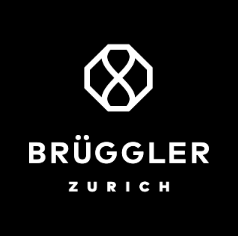In Swiss wealth management, one of the first questions is simple: how much do advisory and discretionary mandates actually cost? This guide explains the real fee drivers, shows transparent CHF examples, and helps you decide which model fits your priorities.
Advisory Pricing (What You Get and What You Pay)
Advisory wealth management focuses on providing professional advice, conducting thorough research, and offering personalised portfolio guidance. You approve each transaction, retaining control over execution.
- Typical management fee: ~0.25%–0.75% p.a. of assets under management (AUM).
- Execution: You approve trades; execution costs often stay lower.
- When it fits: Cost-conscious investors who want expert input and full say over transactions.
CHF Examples (Advisory)
- CHF 2m at 0.50% p.a. → CHF 10’000 per year (ex-custody & transactions).
- CHF 5m at 0.75% p.a. → CHF 37’500 per year.
Discretionary Pricing (What You Get and What You Pay)
With a discretionary mandate, the manager implements decisions on your behalf—useful for speed, discipline, and reduced decision-making friction.
- Typical management fee: ~0.50%–1.50% p.a. of AUM.
- Responsibility: Higher; portfolio adjustments are made proactively.
- When it fits: Time-poor investors who value timely execution and a consistent strategy.
CHF Examples (Discretionary)
- CHF 2m at 1.00% p.a. → CHF 20’000 per year (plus custody & transactions).
- CHF 5m at 0.80% p.a. → CHF 40’000 per year.
Hidden Costs and Transparency (What Price Tags Miss)
Headline fees rarely tell the full story. Depending on your custodian and platform, you may also encounter:
- Custody fees: commonly ~0.10%–0.35% p.a. (sometimes tiered or minimums apply).
- Transaction fees: per-ticket charges or bps-based; can differ across asset classes.
- FX spreads: implicit costs on currency conversions and non-CHF assets.
- Fund/ETF costs: product-level TER/OCF charged inside the instrument.
Independent wealth managers in Switzerland typically disclose these items line by line. Transparent itemisation helps you benchmark the true “all-in” cost.
Want to benchmark quickly? Try our simple advisory vs. discretionary fee calculator and read our custodian bank selection guide to understand the drivers of custody.
Advisory vs Discretionary: Fee Comparison
| Cost Element | Advisory Mandate | Discretionary Mandate |
|---|---|---|
| Management fee | ~0.25%–0.75% p.a. | ~0.50%–1.50% p.a. |
| Decision authority | Client approves all trades | Manager implements decisions |
| Custody & transactions | Often lower | Often higher (depends on activity) |
| Transparency | High (provider-dependent) | High if itemised; varies by provider |
Ranges are indicative. Your all-in cost depends on mandate size, asset mix, trading frequency, and custodian terms.
Which Fee Structure Is Better?
It depends on your priorities.
- Lower headline fee & full control: Advisory tends to win.
- Convenience, speed & discipline: Discretionary can justify the higher fee.
The Hybrid Approach (Often Best of Both)
Many HNWI/UHNWI investors combine both models: a discretionary core for efficiency and an advisory satellite for specialised ideas (private markets, thematic allocations, or opportunistic trades). This can improve flexibility and keep costs aligned with where you need active drive versus optionality.
How to Assess and Negotiate Fees
- Ask for itemisation: Management, custody, transactions, FX, and product costs listed separately.
- Request tiering: Larger AUM tiers should be accompanied by lower marginal bps.
- Match service to price: Reporting, access, research, and response times should reflect the fee.
- Benchmark custodians: Execution quality and operational service matter as much as raw price — see our custodian guide.
- Cross-border nuance: Requirements can affect cost and process; read our cross-border wealth management guide.
Discretionary vs Advisory: Complete Service Comparison (Switzerland)
FAQs
What are typical advisory fees in Switzerland?
Advisory management fees commonly range from ~0.25% to 0.75% p.a. of AUM, excluding custody, transaction, and product costs.
What is usually included in discretionary fees?
The discretionary fee covers portfolio management and decision-making. You will typically still pay custody, transactions, FX, and product-level costs.
Are custody fees always extra?
In most set-ups, yes. Custody is charged by the custodian bank (often ~0.10%–0.35% p.a., sometimes with minimums or tiers).
Is a hybrid mandate common?
Yes. Many clients use a discretionary core for efficiency and an advisory satellite for specialised ideas.
How do I negotiate fees?
Request itemised quotes, ask for tiered pricing on higher AUM, and benchmark execution and service quality across custodians.
Which model is better for cross-border situations?
It depends on your residency, booking centre, and regulatory constraints. Costs and processes can vary—see our cross-border guide for details.




